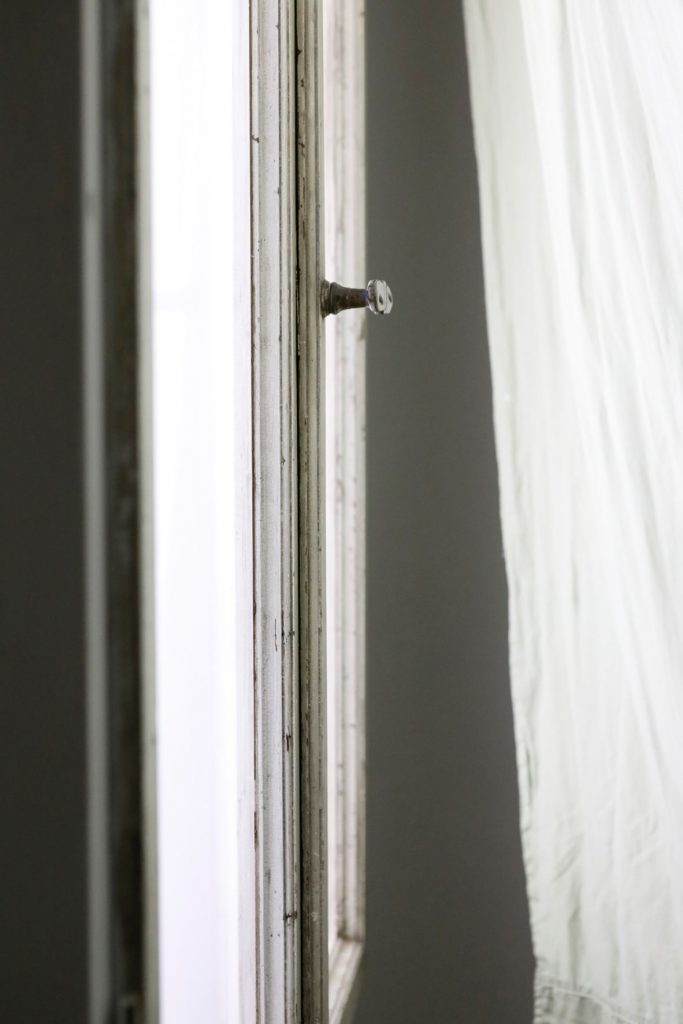#6
ISABELL ALEXANDRA MELDNER
Bright tomorrows, amplified insides
Dec 17 – 31, 2021
In the winter of 2019, the Gimp was nothing more than an ordinary storage room. Before the first exhibition could be opened, some changes had to be made: Fluorescent lamps were installed, the radiator was removed, the floor was painted, etc. etc. The most important change, however, was to hide the only existing window behind a wooden panel. This was the only way to create a neutral atmosphere that we (like many others) favor for presenting contemporary art.
With that in mind, one might think that Isabell Alexandra Meldner’s installation Soft Light Surround (in the Afternoon), which includes a window, a carpet and a pillow, transforms the room into its original state. However, things are not quite that simple. At first glance, the window, which is hidden behind curtains, seems to allow something that is usually avoided in exhibition spaces: to look out the window, to orient oneself in space and time with reference to the outside world. But this possibility turns out to be deceptive. The window is just as little „real“ as the daylight behind it; the carpet has only the shape of incident light and the light on the pillow is merely sewn on. This artificiality turns the atmosphere of the room into something more ambiguous, more floating. It oscillates between the abstractness of an exhibition room and the concreteness of an ordinary room. What becomes sensible here is rather a desire for orientation than orientation itself (imagine waking up in a room you have not been before: you want to pull the curtain aside to find out where you are and how high the sun has risen).
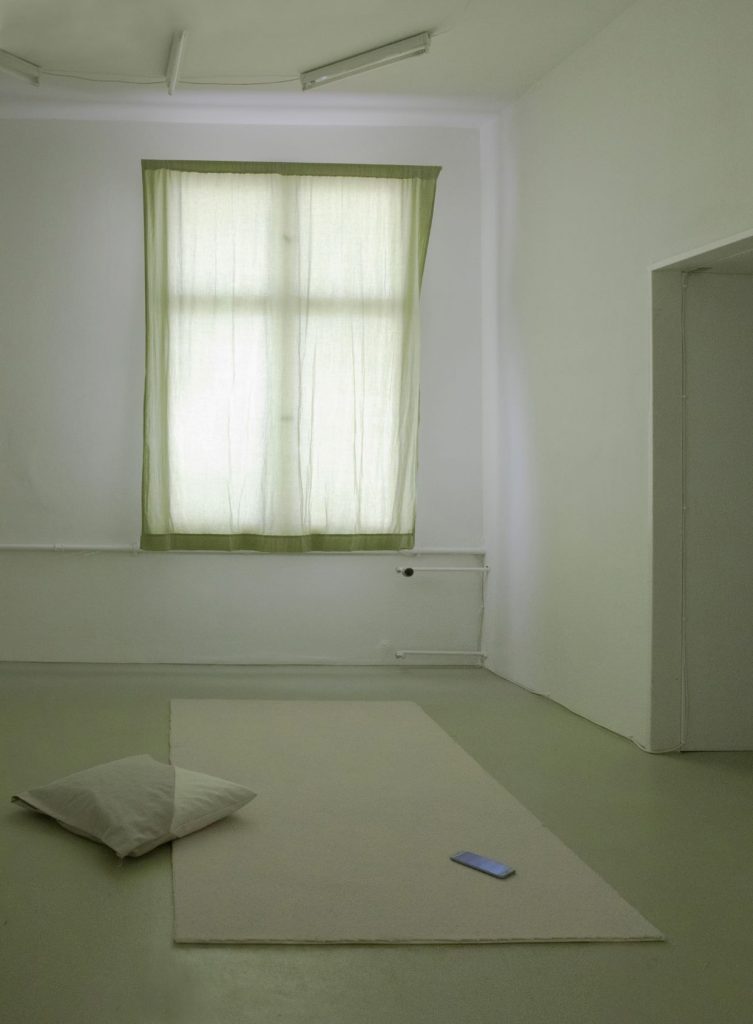
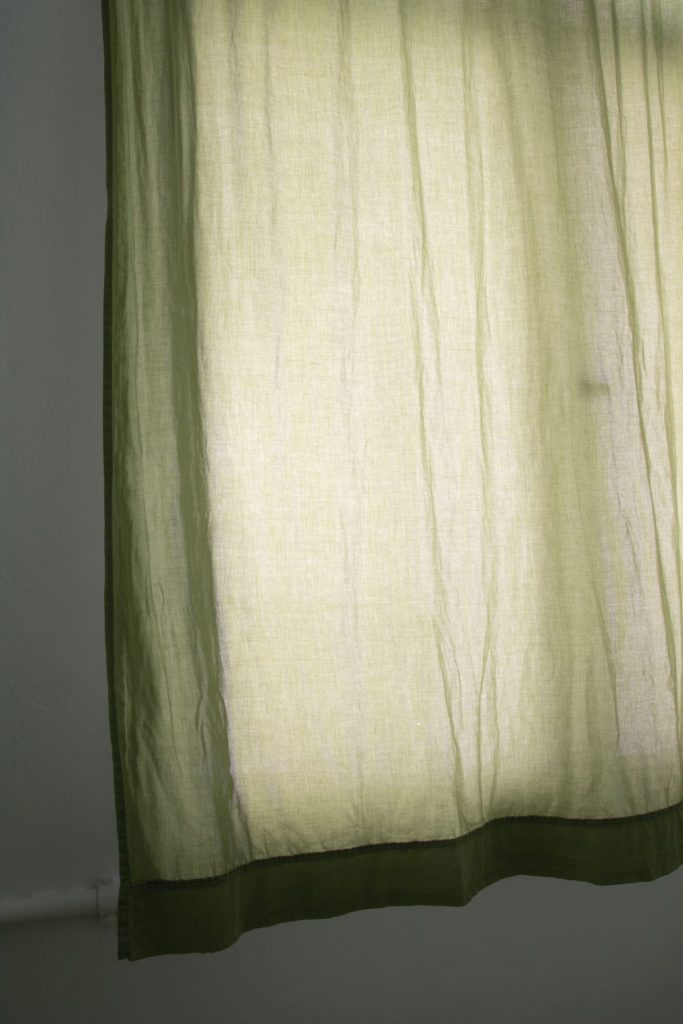
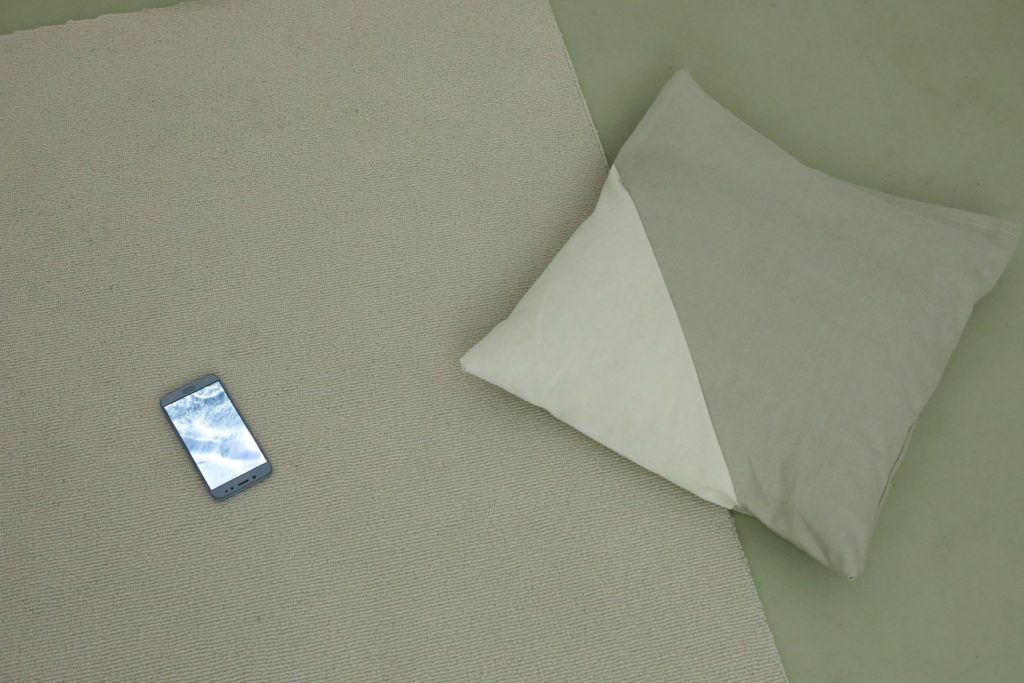
This playful approach to the question of orientation is also continued in the audio work Silences from Anywhere / Tomorrow I Will Listen to the Silence. Here, the artist has arranged recordings of silence from four different rooms in four different cities. In this almost one-hour piece, the “silence” sounds surprisingly rich. In some moments one perceives the traffic as a continuous rush, in others one can distinguish between passing cars; sometimes one assumes to hear the twittering of birds, sometimes the rattling of a helicopter. The outside world always remains indeterminate. One could be in a big city as well as in a small village; it could be rush hour or a quiet Sunday afternoon. The only thing that seems certain here is this: You are neither nowhere nor nowhen.
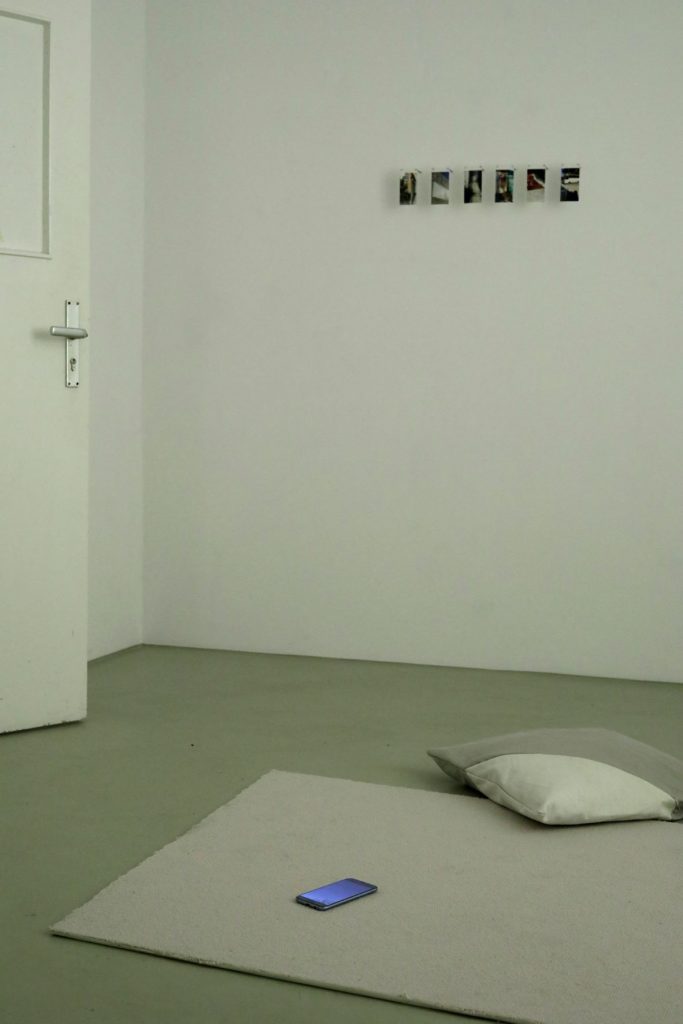
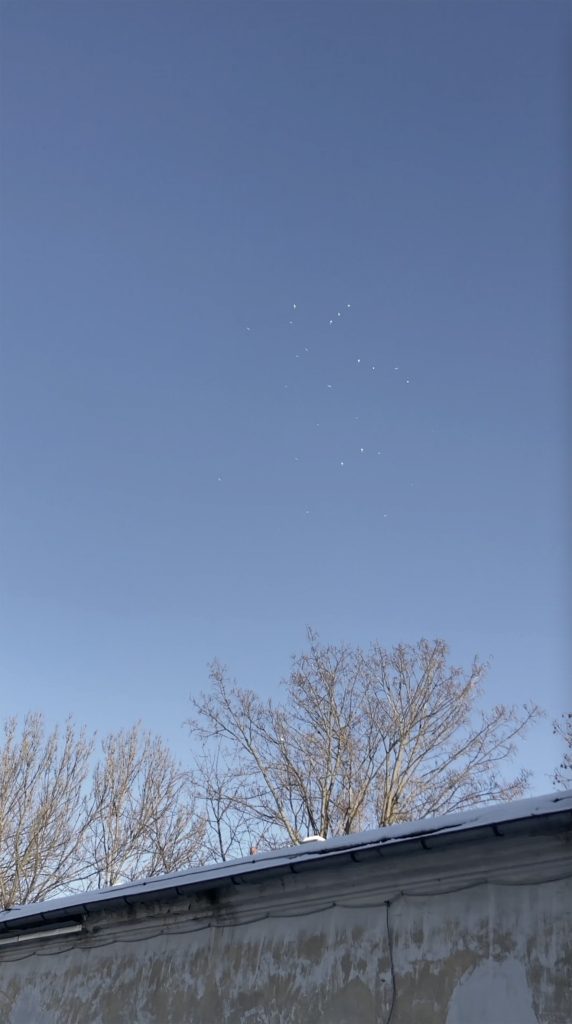
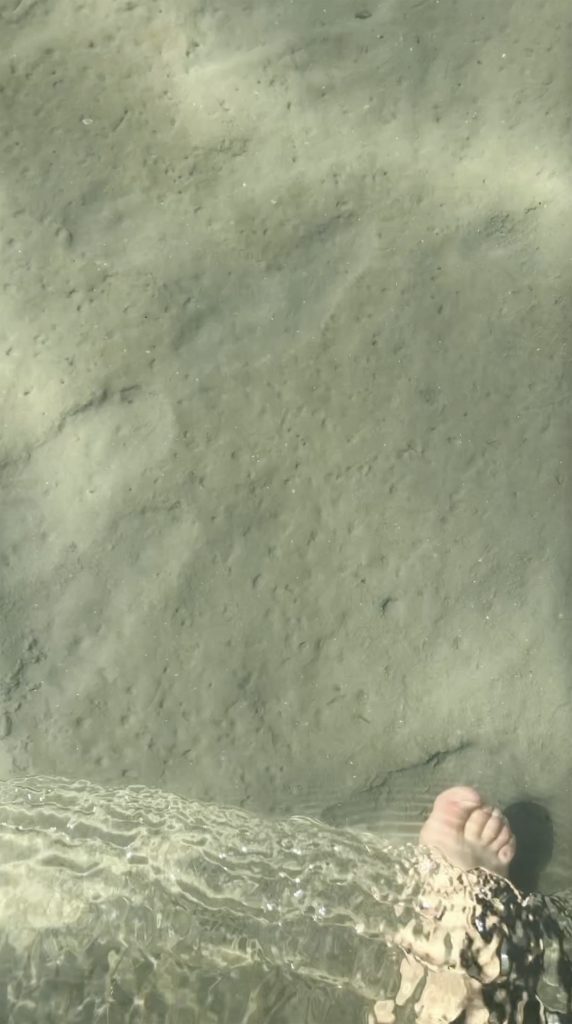

In the photo series Elsewhere, From Behind the Glass, the prevented look out of the window is replaced by a look on a screen. All six photographs were taken with a smartphone and printed in the same format. As in the audio work, it remains unclear where the photographs were taken (in fact, they were taken in four different cities as well). The only obvious thing is that they are not indoor but outdoor photographs, and that they repeat the motifs of light and shadow, window and curtain. Therefore, one perceives these photographs almost like memory images. As if the view, when it lacks the outside, must turn inward to another place and another time.
The video work Far / Close shows the flowing formations of a flock of birds alternating with light reflections that occur while walking through shallow water. The tension of inside and outside is replaced by the tension of proximity and distance. Thus, the question of orientation appears once again: one can look at the world from a distance, through a window, so to speak. However, the world then appears as nothing more than an abstract constellation of things. Or one can immerse oneself in it, touch it and feel its materiality. But then you have to do something else than looking. If you want to understand not only what there is in the world, but also what it is like, you might have to open the door and leave the room – at some point.
text: Clemens Espenlaub
photos: André Simonow
